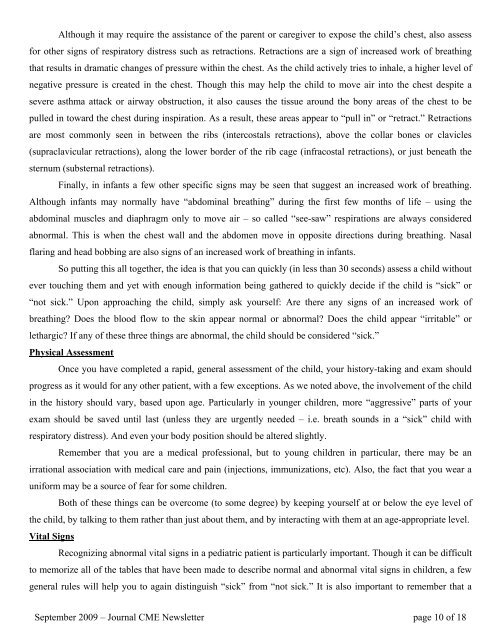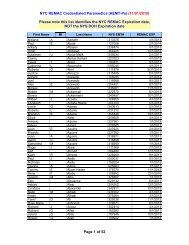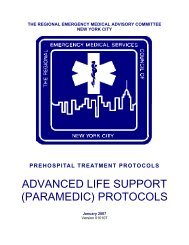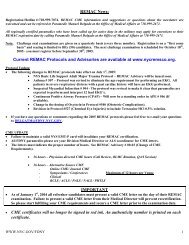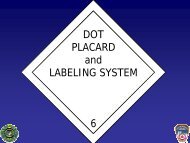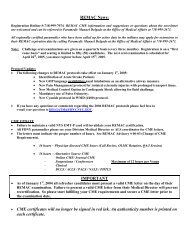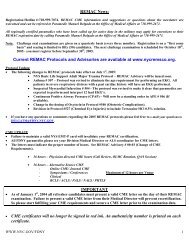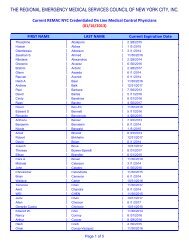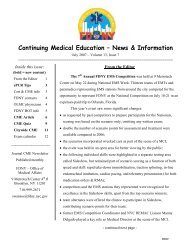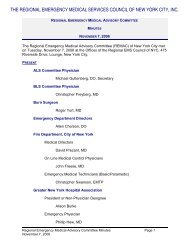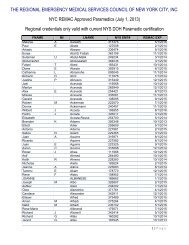Continuing Medical Education - News & Information - The Regional ...
Continuing Medical Education - News & Information - The Regional ...
Continuing Medical Education - News & Information - The Regional ...
Create successful ePaper yourself
Turn your PDF publications into a flip-book with our unique Google optimized e-Paper software.
Although it may require the assistance of the parent or caregiver to expose the child’s chest, also assessfor other signs of respiratory distress such as retractions. Retractions are a sign of increased work of breathingthat results in dramatic changes of pressure within the chest. As the child actively tries to inhale, a higher level ofnegative pressure is created in the chest. Though this may help the child to move air into the chest despite asevere asthma attack or airway obstruction, it also causes the tissue around the bony areas of the chest to bepulled in toward the chest during inspiration. As a result, these areas appear to “pull in” or “retract.” Retractionsare most commonly seen in between the ribs (intercostals retractions), above the collar bones or clavicles(supraclavicular retractions), along the lower border of the rib cage (infracostal retractions), or just beneath thesternum (substernal retractions).Finally, in infants a few other specific signs may be seen that suggest an increased work of breathing.Although infants may normally have “abdominal breathing” during the first few months of life – using theabdominal muscles and diaphragm only to move air – so called “see-saw” respirations are always consideredabnormal. This is when the chest wall and the abdomen move in opposite directions during breathing. Nasalflaring and head bobbing are also signs of an increased work of breathing in infants.So putting this all together, the idea is that you can quickly (in less than 30 seconds) assess a child withoutever touching them and yet with enough information being gathered to quickly decide if the child is “sick” or“not sick.” Upon approaching the child, simply ask yourself: Are there any signs of an increased work ofbreathing? Does the blood flow to the skin appear normal or abnormal? Does the child appear “irritable” orlethargic? If any of these three things are abnormal, the child should be considered “sick.”Physical AssessmentOnce you have completed a rapid, general assessment of the child, your history-taking and exam shouldprogress as it would for any other patient, with a few exceptions. As we noted above, the involvement of the childin the history should vary, based upon age. Particularly in younger children, more “aggressive” parts of yourexam should be saved until last (unless they are urgently needed – i.e. breath sounds in a “sick” child withrespiratory distress). And even your body position should be altered slightly.Remember that you are a medical professional, but to young children in particular, there may be anirrational association with medical care and pain (injections, immunizations, etc). Also, the fact that you wear auniform may be a source of fear for some children.Both of these things can be overcome (to some degree) by keeping yourself at or below the eye level ofthe child, by talking to them rather than just about them, and by interacting with them at an age-appropriate level.Vital SignsRecognizing abnormal vital signs in a pediatric patient is particularly important. Though it can be difficultto memorize all of the tables that have been made to describe normal and abnormal vital signs in children, a fewgeneral rules will help you to again distinguish “sick” from “not sick.” It is also important to remember that aSeptember 2009 – Journal CME <strong>News</strong>letter page 10 of 18


